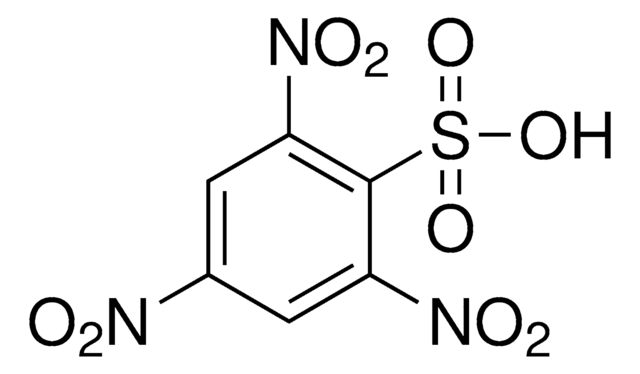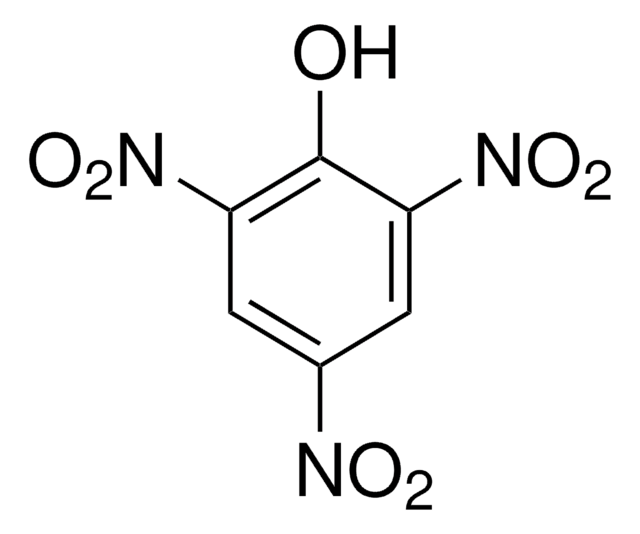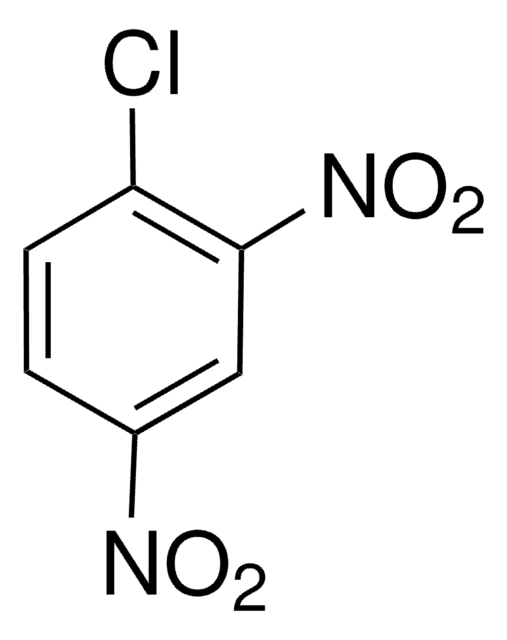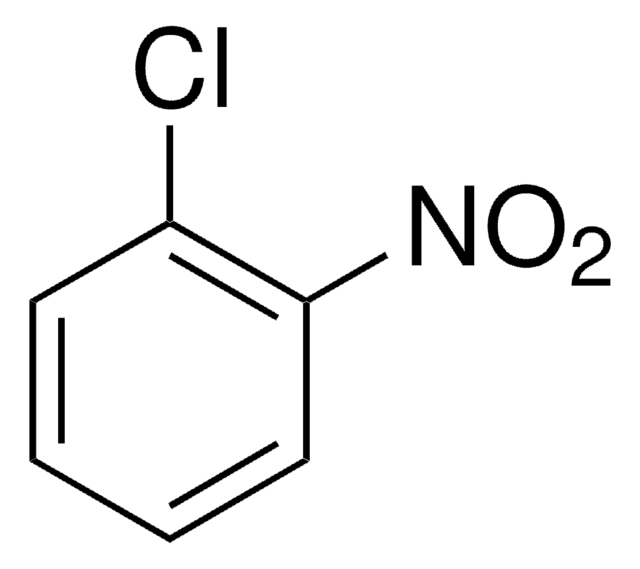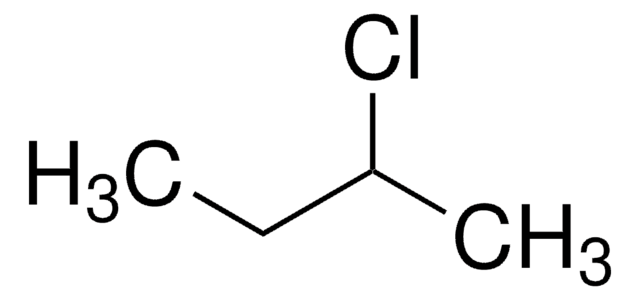79874
2-Chloro-1,3,5-trinitrobenzene
≥98.0% (HPLC)
Synonym(s):
2,4,6-Trinitrochlorobenzene
About This Item
Recommended Products
assay
≥98.0% (HPLC)
form
lumps
functional group
chloro
nitro
SMILES string
[O-][N+](=O)c1cc(c(Cl)c(c1)[N+]([O-])=O)[N+]([O-])=O
InChI
1S/C6H2ClN3O6/c7-6-4(9(13)14)1-3(8(11)12)2-5(6)10(15)16/h1-2H
InChI key
HJRJRUMKQCMYDL-UHFFFAOYSA-N
Other Notes
signalword
Danger
Hazard Classifications
Acute Tox. 1 Dermal - Acute Tox. 2 Inhalation - Acute Tox. 2 Oral - Aquatic Acute 1 - Aquatic Chronic 1 - Flam. Sol. 1
supp_hazards
Storage Class
4.1B - Flammable solid hazardous materials
wgk_germany
WGK 2
flash_point_f
Not applicable
flash_point_c
Not applicable
ppe
Eyeshields, Faceshields, Gloves, type P3 (EN 143) respirator cartridges
Choose from one of the most recent versions:
Already Own This Product?
Find documentation for the products that you have recently purchased in the Document Library.
Our team of scientists has experience in all areas of research including Life Science, Material Science, Chemical Synthesis, Chromatography, Analytical and many others.
Contact Technical Service